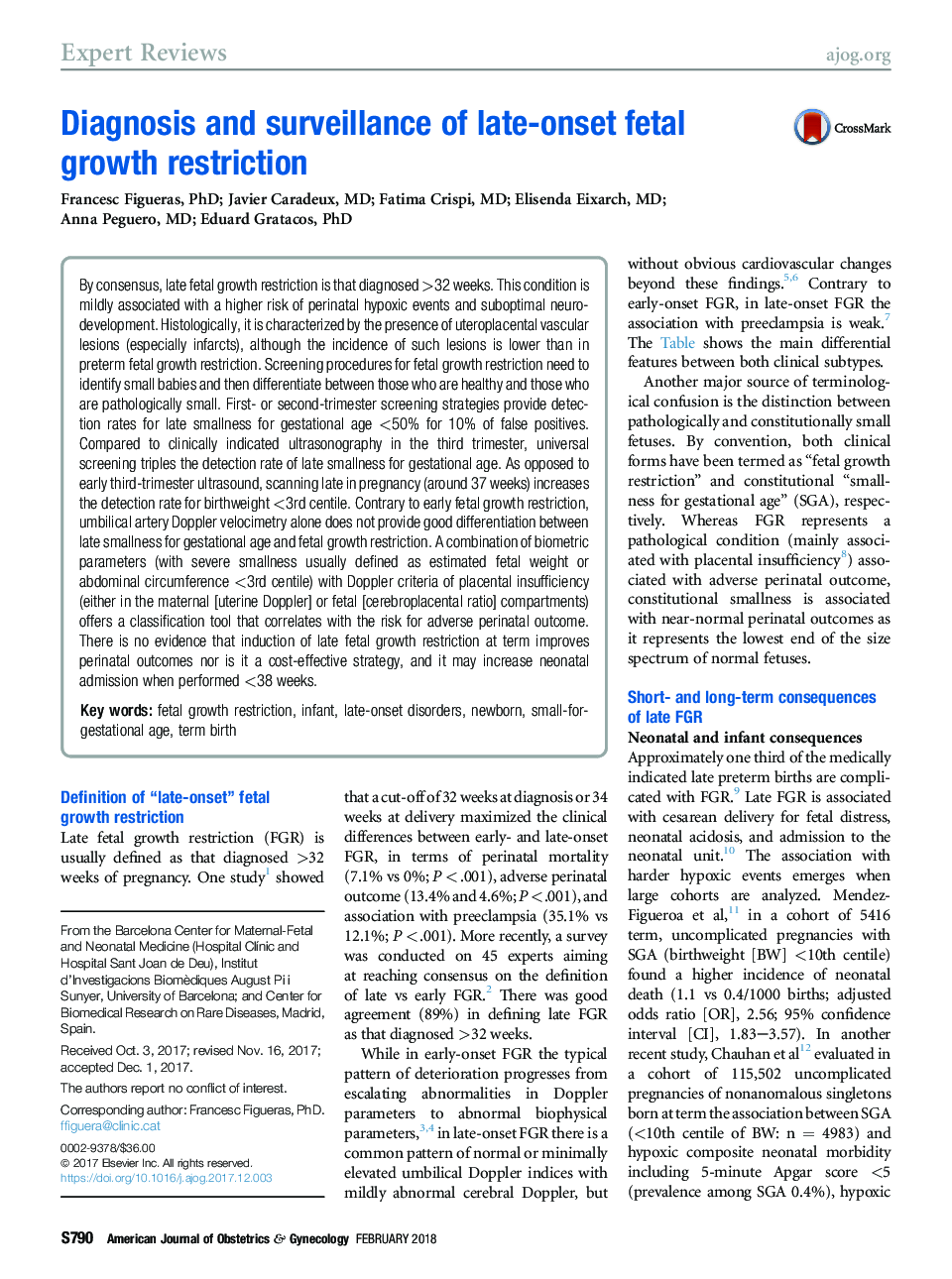| کد مقاله | کد نشریه | سال انتشار | مقاله انگلیسی | نسخه تمام متن |
|---|---|---|---|---|
| 8752816 | 1594866 | 2018 | 14 صفحه PDF | دانلود رایگان |
عنوان انگلیسی مقاله ISI
Diagnosis and surveillance of late-onset fetal growth restriction
ترجمه فارسی عنوان
تشخیص و نظارت بر محدودیت رشد جنین در اوایل شروع
دانلود مقاله + سفارش ترجمه
دانلود مقاله ISI انگلیسی
رایگان برای ایرانیان
کلمات کلیدی
محدودیت رشد جنین، نوزاد، اختلالات اولیه دیررس، نوزاد تازه متولد شده سن کمی برای بارداری، تولد طولانی،
موضوعات مرتبط
علوم پزشکی و سلامت
پزشکی و دندانپزشکی
پزشکی و دندانپزشکی (عمومی)
چکیده انگلیسی
By consensus, late fetal growth restriction is that diagnosed >32 weeks. This condition is mildly associated with a higher risk of perinatal hypoxic events and suboptimal neurodevelopment. Histologically, it is characterized by the presence of uteroplacental vascular lesions (especially infarcts), although the incidence of such lesions is lower than in preterm fetal growth restriction. Screening procedures for fetal growth restriction need to identify small babies and then differentiate between those who are healthy and those who are pathologically small. First- or second-trimester screening strategies provide detection rates for late smallness for gestational age <50% for 10% of false positives. Compared to clinically indicated ultrasonography in the third trimester, universal screening triples the detection rate of late smallness for gestational age. As opposed to early third-trimester ultrasound, scanning late in pregnancy (around 37 weeks) increases the detection rate for birthweight <3rd centile. Contrary to early fetal growth restriction, umbilical artery Doppler velocimetry alone does not provide good differentiation between late smallness for gestational age and fetal growth restriction. A combination of biometric parameters (with severe smallness usually defined as estimated fetal weight or abdominal circumference <3rd centile) with Doppler criteria of placental insufficiency (either in the maternal [uterine Doppler] or fetal [cerebroplacental ratio] compartments) offers a classification tool that correlates with the risk for adverse perinatal outcome. There is no evidence that induction of late fetal growth restriction at term improves perinatal outcomes nor is it a cost-effective strategy, and it may increase neonatal admission when performed <38 weeks.
ناشر
Database: Elsevier - ScienceDirect (ساینس دایرکت)
Journal: American Journal of Obstetrics and Gynecology - Volume 218, Issue 2, Supplement, February 2018, Pages S790-S802.e1
Journal: American Journal of Obstetrics and Gynecology - Volume 218, Issue 2, Supplement, February 2018, Pages S790-S802.e1
نویسندگان
Francesc PhD, Javier MD, Fatima MD, Elisenda MD, Anna MD, Eduard PhD,
